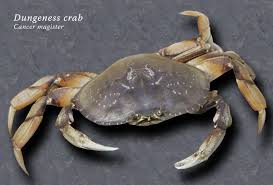State officials have closed both recreational and commercial fishing for Dungeness and rock crab on the California coast north of Santa Barbara to the Oregon border, due to a large algae bloom that’s making the crab unsafe for consumption.
 The bloom, created by an organism called Pseudo-nitzschia, produces a neurotoxin called domoic acid that can build up in marine life. It causes vomiting, diarrhea and cramping in humans — and even death, in severe cases.
The bloom, created by an organism called Pseudo-nitzschia, produces a neurotoxin called domoic acid that can build up in marine life. It causes vomiting, diarrhea and cramping in humans — and even death, in severe cases.
California’s Dungeness crabs are shipped across the U.S. and internationally, and the $60 million fishery is considered vital to the region’s small fishermen. Both the commercial and recreational fishery will open as soon as test samples show the crab is safe.
Clarissa Anderson, a research scientist at the Institute of Marine Sciences at the University of California, Santa Cruz, told NPR this bloom has been unprecedented in its extent and its persistence. It started in May and continued on to September.
The warm temperatures all along the North Pacific and off the West Coast are contributing to the persistence of this bloom and are allowing it to stay in the surface waters. We’re now starting to see that subside a little bit as we go into fall.
We know from weekly sampling that domoic acid levels, at least in the surface waters, have been coming down for the last two months. And they’re pretty low now.
The issue with the crabs is that toxin can persist in the sediments. And those crabs are feeding on all kinds of crustaceans and shrimp along the bottom. And so the crabs are bio-accumulating it in their flesh.








